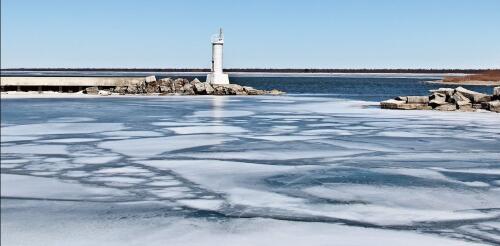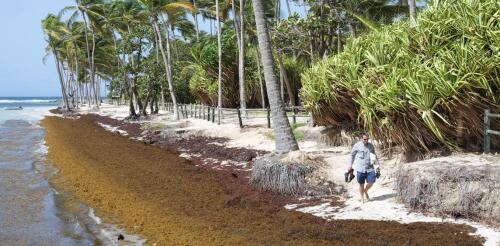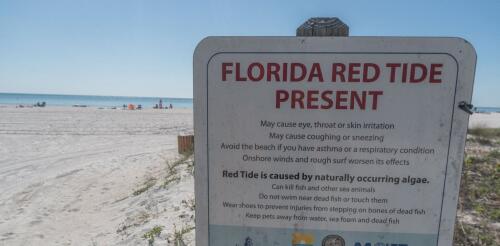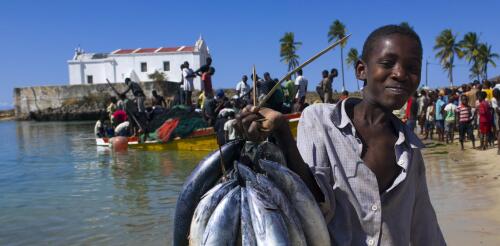Algae
Winters on the Great Lakes are harsh – so much so that the scientists who work there often focus on the summer months, when tiny microbes at the base of the food chain were thought to be most productive. However, emerging research is changing our understanding of these winter ecosystems and shining a light on a vibrant world of winter activity just below the ice. Scientists discovered in the early 2000s that communities of diatoms – tiny photosynthesizing algae – were thriving in the light under the wind-swept lake ice. But, it turns out, that was only part of the story. As the Great Lakes’ winter ice disappears – it hit record lows in the winter of 2023-24 – new analyses show that some diatoms appear to have a different way to create energy and survive in the dark, turbid ice-free water until summer. A thin slice of Lake Erie ice collected by a scientist has diatom algae growing on the bottom....
The Caribbean’s sandy beaches, clear turquoise water and vibrant coral reefs filled with an amazing variety of sea creatures have long been the pride of the islands. The big three – sun, sea and sand – have made this tropical paradise the most tourism-reliant region in the world. But now, all of that is under threat. The explosive growth of a type of seaweed called sargassum is wreaking havoc on economies, coastal environments and human health across the islands. I study the intersection of critical infrastructure and disasters, particularly in the Caribbean. The sargassum invasion has worsened since it exploded in the region in 2011. Forecasts and the seaweed already washing up suggest that 2024 will be another alarming year. Sargassum levels were already high around many eastern Caribbean islands in late May 2024. Forecasters expect increasing sargassum washing up in June on many of the islands and in the Gulf of M...
Plunging into the ocean or a lake is one of the great joys of summer. But arriving at the beach to find water that’s green, red or brown, and possibly foul-smelling, can instantly spoil the party. As a toxicologist, I study health risks from both synthetic and natural substances. I’ve conducted research into early detection of harmful algal blooms, or HABs, which are an increasing threat to humans, animals and the environment. Toxins produced during these blooms have been implicated in human and animal illnesses in at least 43 states. Scientists have estimated that in the U.S. alone, freshwater HABs cause more than US$4.6 billion in damage yearly. Here’s what to know about them if you’re bound for the water’s edge this summer. Harmful algal blooms have become a regular occurrence along large stretches of Florida’s coast in recent years. Tiny organisms, big impacts Algae and cyanobacteria – often...
Heat waves, droughts and extreme weather are endangering people and ecosystems somewhere in the world almost every day. These extremes are exacerbated by climate change, driven primarily by increasing emissions of greenhouse gases that build up in the atmosphere and trap heat at the Earth’s surface. With that in mind, researchers are exploring ways to pull carbon dioxide out of the atmosphere and lock it away – including using the ocean. But while these techniques might work, they raise serious technical, social and ethical questions, many of which have no clear answers yet. We study climate change policy, sustainability and environmental justice. Before people start experimenting with the health of the ocean, there are several key questions to consider. Ocean carbon dioxide removal 101 The ocean covers about 70% of the planet, and it naturally takes up carbon dioxide. In fact, about a quarter of human-produced carbon dioxide ends up in the ocean. Ocean carbon di...



